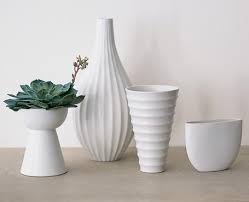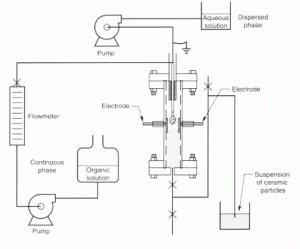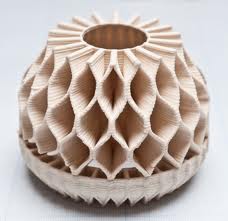CHEMISTRY OF CERAMICS – WORLD OF CHEMICALS
Ceramics
Every day in our homes we are using smooth, beautiful designed coffee cups, tea cups, plates and bowls. These should be handled carefully and proper maintenance required. Even in laboratories mortar and pestles lab ware manufactured by using special kind of material. All these kind of utensils and lab ware are made up of ceramic.
Ceramic materials are non-metallic, inorganic compounds-primarily compounds of oxygen, carbon, nitrogen, boron, and silicon. Ceramics includes the manufacture of earthenware, porcelain, bricks, sewer pipe and electrical insulators.
Ceramics was started using in time of Neolithic time. In this 20th centaury their uses reached to bowls to semiconductors. Some kind of advanced ceramics include alumina ceramics are using in missiles and rocket nose cones. Other advanced usage includes uranium dioxide (UO2) ceramics used in nuclear power plant elements, laser materials, ceramic capacitors, piezoelectric materials.
Ceramics making process
Ceramics is made up of clay, talc, silica, feldspar, organometallic compounds, silicon carbide, alumina, and barium titanate.
Process
First natural material like clay is required to be heated to high temperatures. Clay consists of a large number of very tiny flat plates, stacked together by thin layers of water. The water allows the plates to attach together and allowing the plates to slide past one another. As a result, clay is easily molded into various shapes.
High temperatures make drying water inside the clay and allow bonds to form between plates, holding and promoting the formation of a hard solid. Binders such as bone ash are sometimes added to the clay to promote sturdy bond formation, which makes the ceramic resistant to breakage.
Ceramic is also made by mixing clay and cements and hardening it by heating it to high temperatures. Advanced technique of making of ceramics used sol-gel process.
Ceramics contain following properties
- Chemical properties
- Mechanical properties
- Physical properties
- Thermal properties
- Electrical properties
- Magnetic properties
Chemical properties
Industrial ceramics are made up of compounds of oxygen, heavy metals, carbon, boron, nitrogen, silicon. Ceramics do not react with most liquids, gases, alkalies, and acids.
Physical properties
Ceramics are smooth, lighter in weight, hard and resistance to abrasions.
Electrical properties
Ceramics are also used as insulators. Certain ceramics, such as porcelain, act as insulators at lower temperatures but in contrast they will conduct electricity at higher temperatures.
Ceramics applications
Ceramics used for making strong, hard, and abrasion-resistant materials.
In textile industry ceramics resist the cutting action of fibers traveling through these guides at high speed.
Scientists discovered a family of superconductive copper-oxide-based ceramics



No comments:
Post a Comment